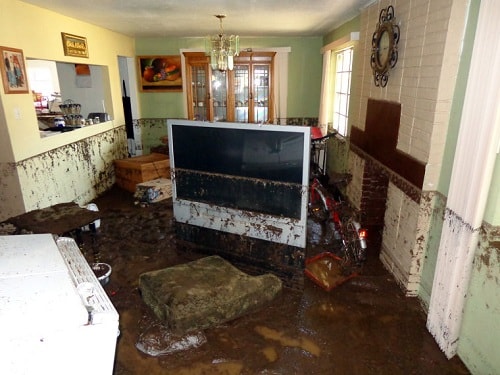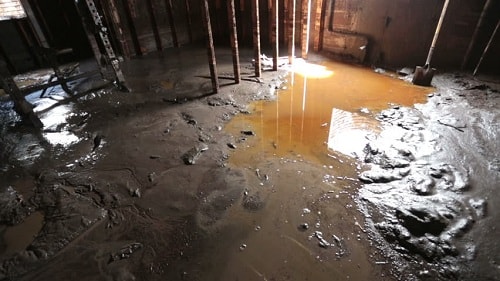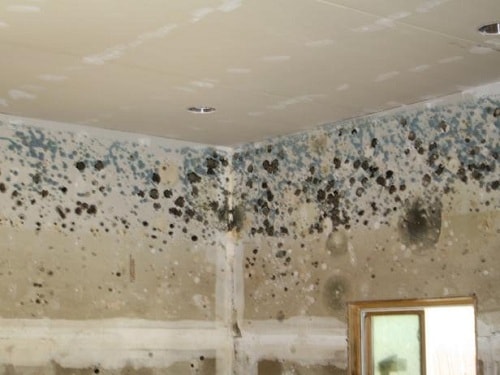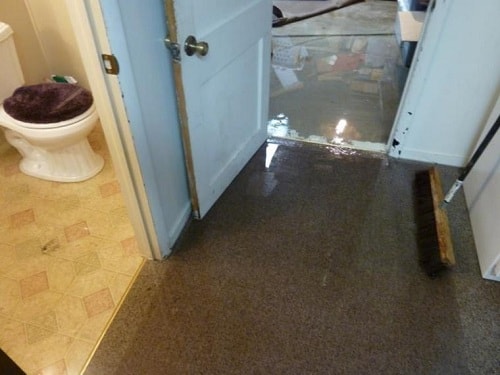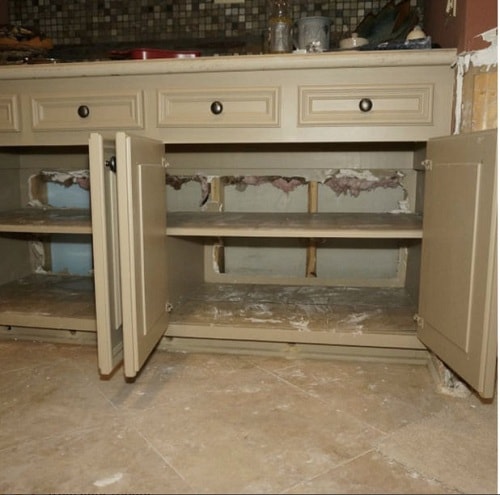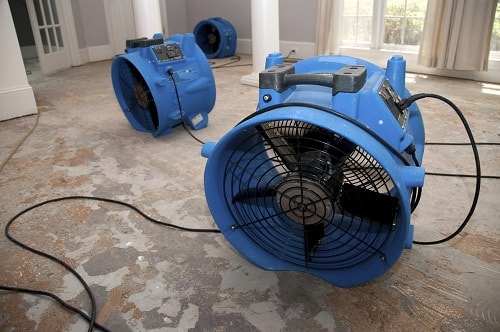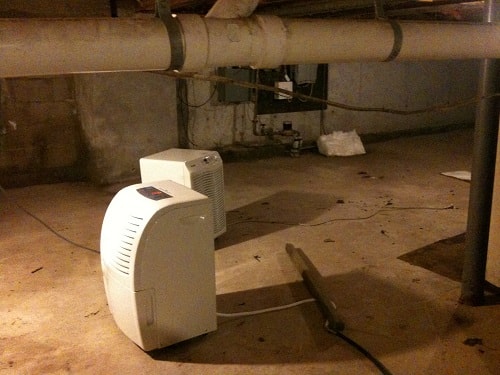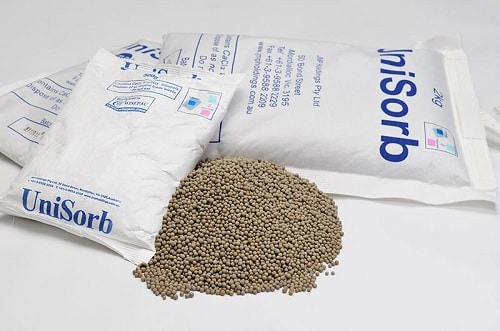Almost every natural disaster leaves some damages to your property, and the hurricane (obviously with the floods) is the worst one. You will find your house covered by mud, silt, and unknown contaminants that cause some serious destructions.
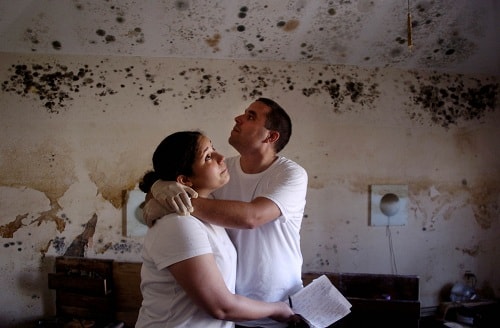
It becomes your obligatory to get rid of the floodwaters as soon as possible right after they’re gone. It’s totally dangerous if you let it for a longer time, as stated by the Red Cross, there are three ways of the floodwaters can affect your home, such as:
-
They harm some materials

image source The most majority destruction that it’s caused is damaging the wallboard. When the water remains too long it can create worst destruction to your wall.
Then, some wooden furniture will experience rot, warp, or swell which definitely sucks. Furthermore, it will affect the electrical parts which can cause malfunction, short out, shock or even fires.
-
They create some health hazards

image source Dirty water, mud, and silt are the most annoying substance that you can find after the hurricane. They obviously litter your house, but the harm doesn’t stop there, it also can cause further disturbance.
Some health hazards include bacterial infections, mosquito-borne viruses, rising damp, rising damp, and injury source are can be caused by the floodwaters.
-
They create excessive growth of mildew

image source Mold or fungus can cause some severe destruction to lots of your stuff like walls, ceiling, furniture, carpets, and much more. They can grow fast within 48 hours, indicated by those dirty spots and fusty odor.
Below, we have some steps to handle the problems for after hurricane Irma recovery that is shared by the Red Cross. You have to follow the steps in the presented order to get rid of the case properly.
After Hurricane Irma Recovery
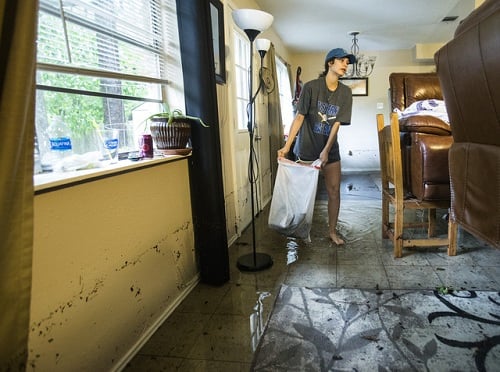
Before thinking about drying out the house, you have to think about the safety first. Check the dangerous thing like the structural, gas and electrical issue.
Reduced The Humidity
The first thing that you’ll need to do in answering the question about how to properly dry up your house right after the flood is lowering the humidity level inside your house. It’ll help to fasten and ease the drying and cleaning process.
You can do these following 5 steps to reduce the humidity and prevent further destruction caused by the dangerous substances from the floodwaters:
-
Let the ventilation works optimally

image source Check whether or not the humidity outside is lower than the inside, and if it is, you can open all the doors and windows to let the moist air indoor goes to the drier air outside. Your own body can sense when the humidity level outside is lower by feeling the warmth around the room or even better, you can use a thermometer with a humidity measure.
-
Check the closet and cabinet

image source You need to open the cabinet doors, remove the drawers, and even open up the back of the cabinet to let the air circulate properly.
-
Use the fans

image source Fans can blow out the damaging air that contains the dangerous contaminant. They are such the most effective device to move the air and dry out your house. You can rent the large fans that averagely cost $20 a day if you don’t have ones.
-
Use the dehumidifiers

image source After you think the fans have worked enough to remove the dirty air, you can now use the dehumidifier to lower the moisture. It would be an effective effort for the closed up areas in your house.
-
Use the materials that absorb excessive moisture

image source The materials are called desiccants like chemical dehumidifier packs, clay cat litter, and calcium chloride pellets that usually used to melt the ice. Those things are usually available in grocery or drug stores.
-
Ask a contractor’s help

image source If you have done all of those jobs of after hurricane Irma recovery, and think that you didn’t do your best, you can contact a contractor. Thing to keep in mind is the excessive increase of price that they usually offer after the disaster. Therefore, you have to list the best prices that are offered by several contractors.
The key to dry out your house completely is being patient, it could take some weeks to get rid of those after flood problems. The mildew damage and odor could last forever if you the house is not dry thoroughly.
How To Dry Ceilings and Walls
For further drying process of after Hurricane Irma recovery, you may need to pay attention to the ceiling and walls You can drain them by following some steps below.
Draining the Ceilings
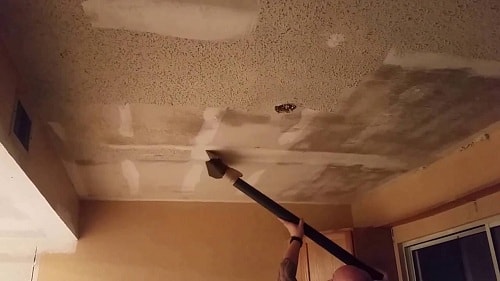
When the flood is very deep, it is so possible that your ceiling can hold some water. This circumstance is very dangerous especially when you get back home after the floodwaters have run out. The sagging ceiling may fall and cause the serious injuries, you’ll need to drain the water, and then remove the broken ceiling.
- Prepare a nail and stick that is long enough to reach your ceiling. It will become a poker to poke the ceiling.
- When you find some sagging part, poke its edge to drain the trapped water above. Keep in mind not to stand under the sag, and do not poke the center of the sag since it may collapse the ceiling.
- You can poke another hole when you think that the water has drained enough.
- Start to tear down the broken ceiling, you can’t use it anymore.
- Repeat the steps when you find other sagging ceilings in the other rooms.
Draining the Walls
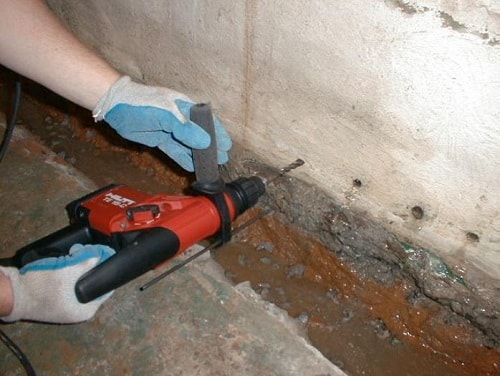
The steps below will guide you on how to remove the water that after Hurricane Irma recovery is trapped within your wall. It needs a little bit of construction skill, so it’s better to contact a pro if you think you can’t cope with it.
- Remove the baseboard to check for the water, then stick a knife or awl about 2″ above the floor.
- When you find the water drips out, drill a large hole by using a cordless drill to drain the water.
- If you think that the wall would be replaced anyway, you can go using a hammer to knock out a large hole.
In addition, if you have a plaster wall, only use a drill to make a hole above the sill plate, because a hammer of knife won’t work with the plaster wall. Moreover, for the walls with metal still, you should make a hole by using a drill at the floor level.

So those are some steps of after Hurricane Irma recovery that you can try. Be careful in doing all of those processes and keep in order.
